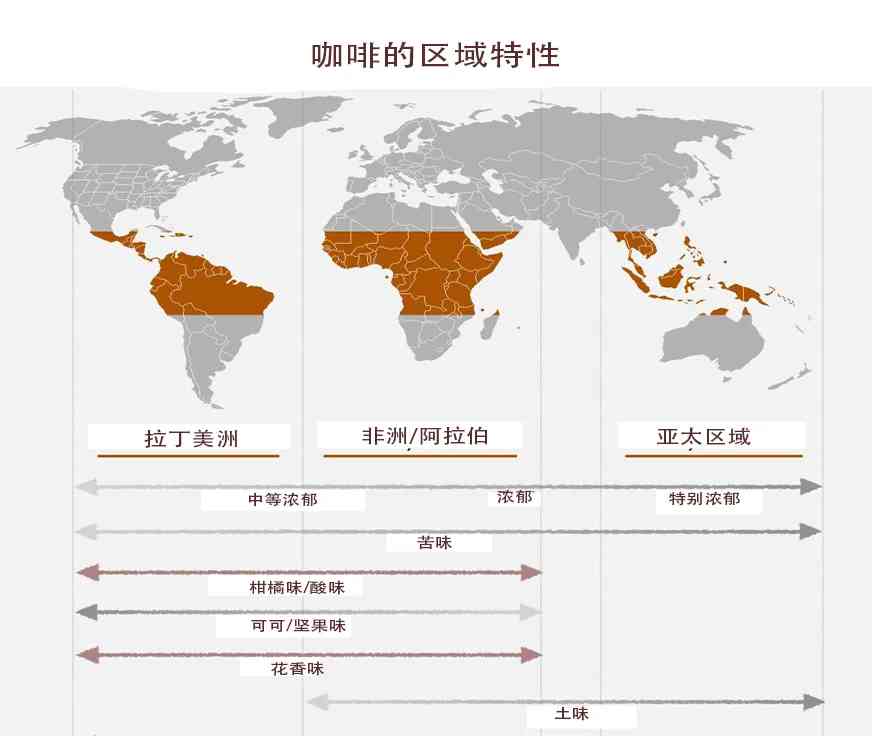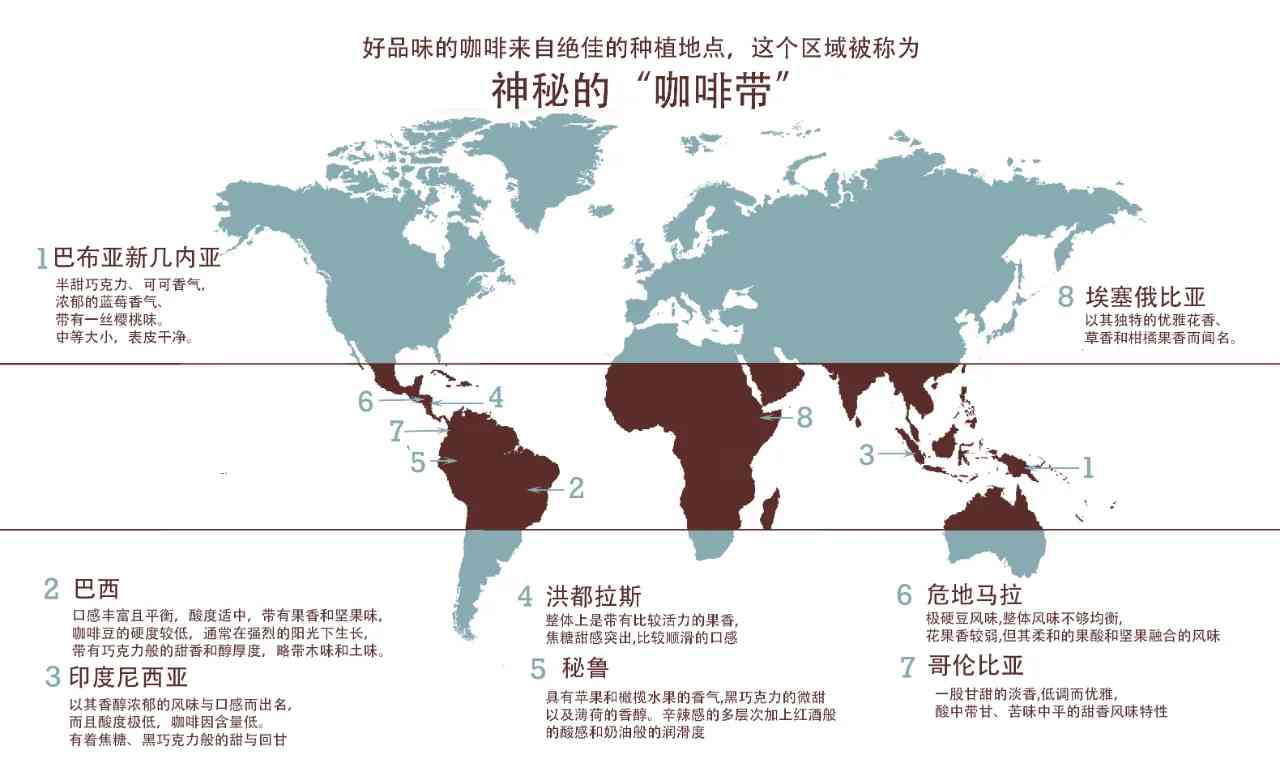Discover the Enchanting Secrets of the World’s Coffee Belt
🌟Almost all of the world’s coffee beans originate from a mystical “Coffee Belt.”
🌍This Coffee Belt, a region nestled between the Tropic of Cancer and the Tropic of Capricorn, is where coffee beans are extensively cultivated, forming a distinct belt-like area. Also known as the Bean Belt or Coffee Zone, this region is primarily situated around the equator, within about 25 degrees north and south latitude.

The warm climate and abundant sunshine make it a veritable paradise for coffee trees. With an annual average temperature above 20°C, the Coffee Belt provides the ideal conditions for these tropical plants, which cannot thrive if temperatures drop below 20°C.

🌿The climatic conditions in the Coffee Belt are essential for the growth of coffee. Arabica coffee, known for its delicate flavor, thrives in cooler, less humid environments and cannot tolerate prolonged exposure to temperatures below 5°C. Therefore, it is predominantly planted on steep slopes at altitudes ranging from 1,000 to 2,000 meters.
In contrast, Robusta coffee, which is more resilient, is typically grown in lowlands below 1,000 meters. An even distribution of rainfall, with an annual precipitation of 1,000 to 2,000 millimeters, combined with moderate sunlight, creates the perfect environment for coffee cultivation.
🏞️Soil quality plays a crucial role in the success of coffee growth. The ideal soil for cultivating coffee is moist and rich in organic matter, such as the fertile volcanic soil found in the Ethiopian Highlands. This weathered volcanic soil is naturally rich in humus, providing the necessary nutrients and moisture that coffee trees need to flourish.
🌤️Spanning about 70 countries and regions worldwide, the Coffee Belt includes approximately 50 areas with the right climatic conditions for coffee bean production. These regions include Ethiopia and Tanzania in Africa, Brazil, Colombia, Honduras, and Costa Rica in Central and South America, and Vietnam and Indonesia in Southeast Asia. Each of these areas contributes uniquely to the global coffee industry, making them key players in the world of coffee production.

